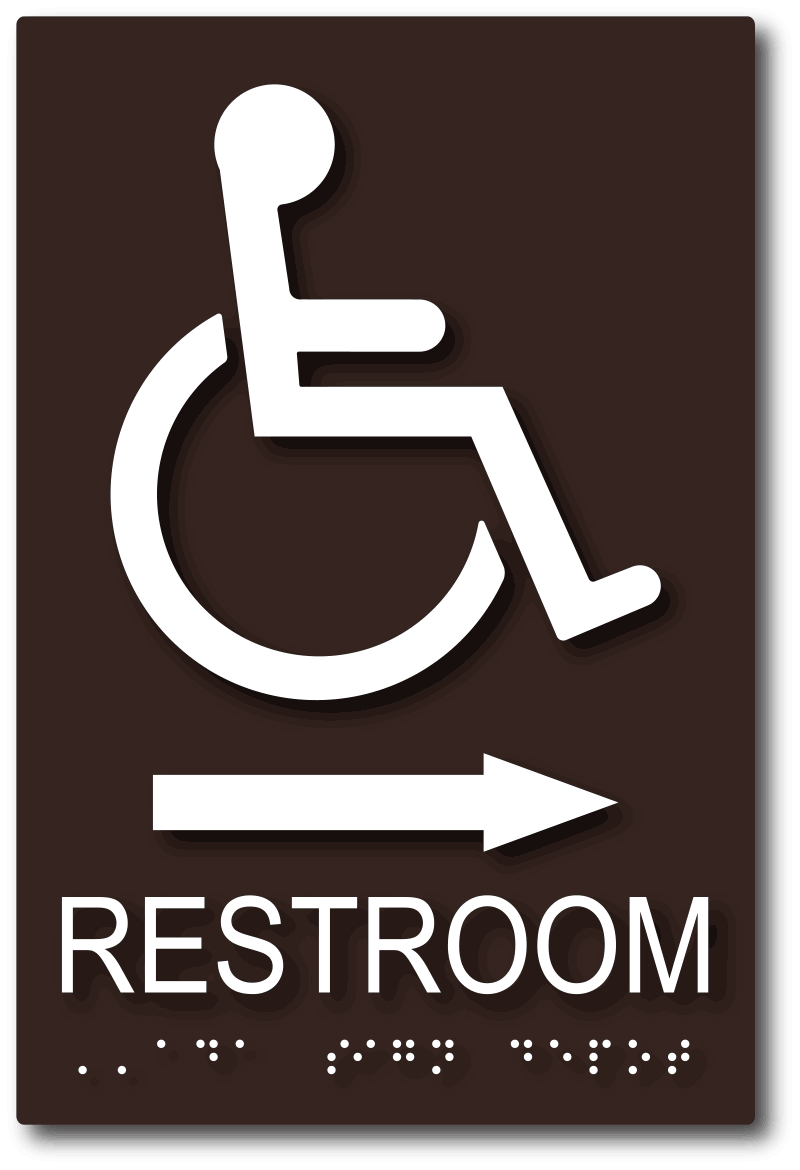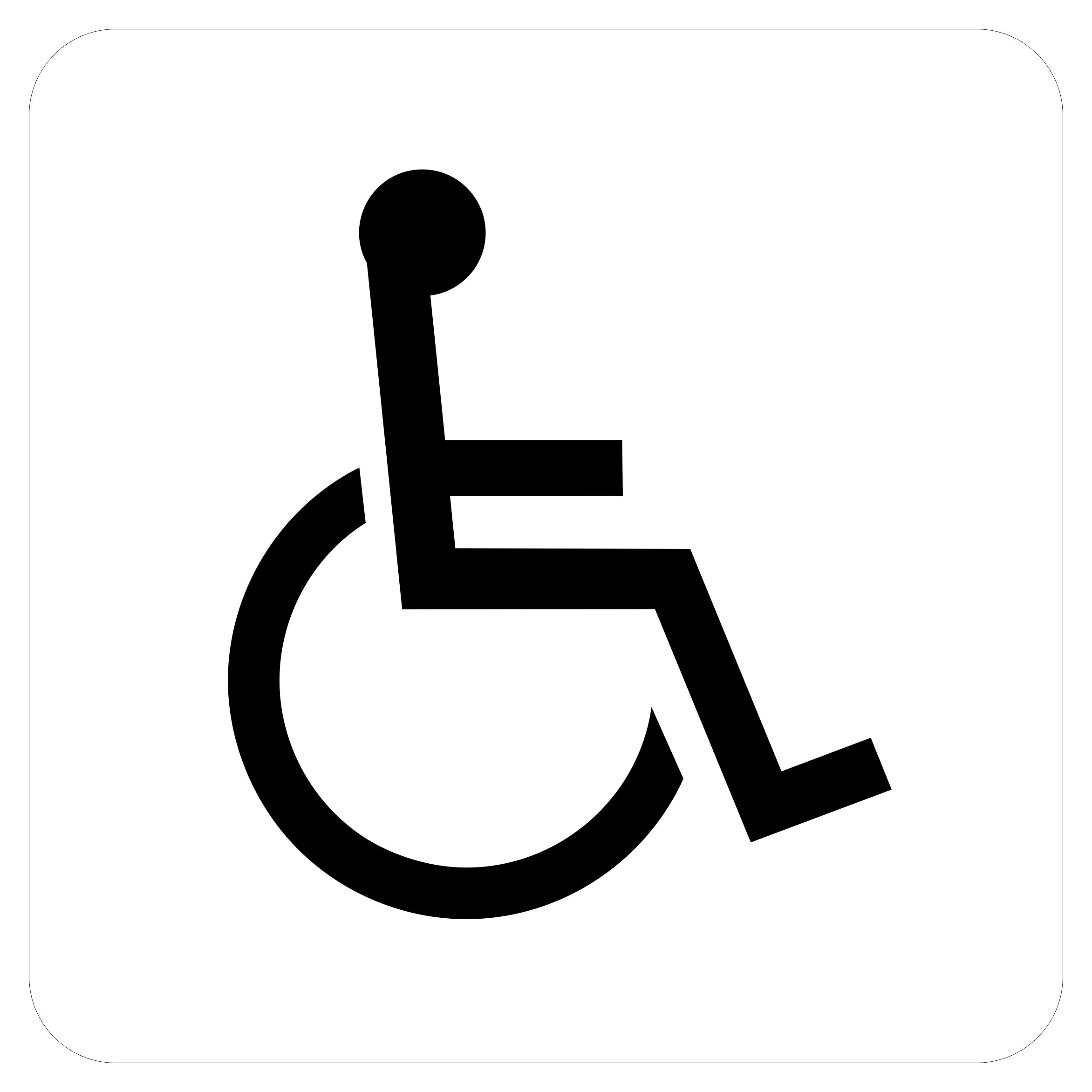Customizing ADA Signs to Satisfy Your Certain Demands
Customizing ADA Signs to Satisfy Your Certain Demands
Blog Article
ADA Signs: Ensuring Availability and Compliance in Public Spaces
ADA signs plays a vital role in assuring accessibility and conformity within public spaces, substantially contributing to an inclusive setting for individuals with specials needs. By adhering to ADA requirements, signs not only assists in navigating however additionally underscores an organization's devotion to variety and equality. As we check out the subtleties of ADA signage, from tactile functions to make complexities, it's vital to consider exactly how these components integrate to support the legal rights of all customers. What are the common risks companies face in maintaining compliance, and just how can future fads in signage continue to drive ease of access forward?
Value of ADA Signage
In contemporary society, the significance of ADA signage expands past plain conformity with legal mandates to embody a dedication to inclusivity and access for all people. These indications are vital in producing environments where individuals with handicaps can browse public areas with the exact same ease and freedom as those without handicaps. By supplying clear and standard details, ADA signs guarantees that everyone can access centers, solutions, and information without obstacles.
The value of ADA signage exists in its capability to improve the lifestyle for individuals with specials needs by promoting equivalent gain access to. It eliminates the barriers that might or else impede their capacity to get involved completely in community life. These signs offer as noticeable signs of a company's commitment to variety and equality, showing broader societal worths that champion the civil liberties and self-respect of all people.
Furthermore, ADA signage plays a vital function in public safety and security. By directing people to exits, bathrooms, and various other necessary facilities, it makes certain that all people, no matter physical capability, can evacuate securely throughout emergencies. In summary, ADA signs is not simply a regulatory requirement however an effective tool for fostering a fair and inclusive society.
Crucial Element of Compliance

Placement is vital; signs must be installed in locations that are conveniently noticeable and obtainable. Usually, signage ought to be installed between 48 and 60 inches from the ground to make sure availability for both standing and wheelchair individuals. Tactile elements, such as Braille, are important for individuals with aesthetic problems, giving important info in a non-visual style.
High-contrast colors in between the text and history are required to improve readability for individuals with low vision. The ADA mandates details comparison ratios to ensure clearness. Furthermore, character dimension is a vital factor to consider, with minimal height requirements determined by the watching distance to ensure readability from numerous angles.
Style Considerations for Accessibility
Creating available signage calls for a precise approach to guarantee it meets the demands of all individuals, particularly those with specials needs. This involves considering different design aspects that enhance readability and use. Key aspects include the option of font, shade contrast, and tactile attributes. Font styles need to be sans-serif, with clear and basic letterforms, to assist in very easy reading. The dimension of the text is similarly critical, with ADA guidelines advising a minimum height based upon viewing distance to make certain legibility.
Contrasting colors between text and background are necessary for presence, particularly for individuals with visual disabilities. A high comparison proportion aids identify the message from its history, boosting readability under various lighting conditions. Additionally, tactile elements, such as Braille and increased characters, are important for individuals who are blind or have low vision. These components should be situated at a constant elevation and position to guarantee simple gain access to and comprehension.
Furthermore, the placement of signs plays a considerable function in ease of access. Indications should be installed in areas that are conveniently reachable and unobstructed. Guaranteeing that signage is placed at proper heights and angles enables all customers, consisting of those using mobility devices, to engage with them successfully.
Common Blunders to Prevent

An additional common mistake is the inaccurate positioning of signage. ADA standards specify specific height and area demands to make certain that indications are conveniently visible and obtainable by all people, including those making use of wheelchairs. Ignoring these guidelines not just hampers access however also runs the risk of non-compliance with legal requirements.
Additionally, not enough contrast between message and background is a regular oversight. Sufficient comparison is necessary for readability, particularly for people with reduced vision. Designers often select shades that are visually enticing however do not have the necessary contrast, making the message difficult to determine.
Finally, some developers fail to incorporate tactile aspects, such as Braille, which are crucial for individuals that are blind. Leaving out these attributes not just results in non-compliance with ADA policies however likewise limits accessibility for a sector of the population that relies upon tactile information.
Future Trends in Signage
Developments in modern technology and boosting understanding of inclusivity are shaping the future patterns in signage style. As culture becomes more conscious of diverse needs, the integration of smart technologies into signage is gaining traction. Digital signs, for example, is advancing to consist of real-time updates and interactive attributes, which can be critical in giving vibrant info in public areas. These indications typically incorporate touch screens or gesture-based controls, enabling customers to browse content tailored to their specific needs. from this source
An additional emerging fad is the use of augmented fact (AR) to enhance customer experience. AR-enabled signage can overlay electronic information onto the physical atmosphere, providing aesthetically impaired people with auditory or haptic feedback. ADA Signs. This innovation not just enhances accessibility however additionally produces an engaging experience for all individuals
Sustainability is additionally a considerable factor influencing signs trends. Environmentally friendly products and energy-efficient lighting services are being focused on to align with international environmental objectives. Innovations in products scientific research are leading to the development of more long lasting and weather-resistant signs.
Conclusion
ADA signage plays a crucial duty in guaranteeing access and conformity within public spaces by incorporating tactile aspects, high-contrast colors, and calculated positioning. The adherence to ADA criteria not just promotes secure navigating for people with disabilities but also signifies an organization's dedication to diversity and inclusivity. By avoiding common mistakes and embracing future trends, public spaces can remain to progress these worths, ensuring that the legal rights and dignity of all individuals browse around this site are respected and upheld.
ADA signage plays an important function in guaranteeing accessibility and compliance within public rooms, dramatically adding to a comprehensive atmosphere for individuals with disabilities. As we discover the subtleties of ADA signage, from tactile attributes to create ins and outs, it's important to think about how these components integrate to support the rights of all customers.In contemporary society, the significance of ADA signs prolongs past additional info simple compliance with lawful requireds to embody a dedication to inclusivity and availability for all individuals. By giving standardized and clear details, ADA signage ensures that every person can access facilities, solutions, and info without obstacles.
ADA signage plays a vital duty in guaranteeing access and conformity within public spaces by integrating tactile aspects, high-contrast colors, and calculated placement. (ADA Signs)
Report this page